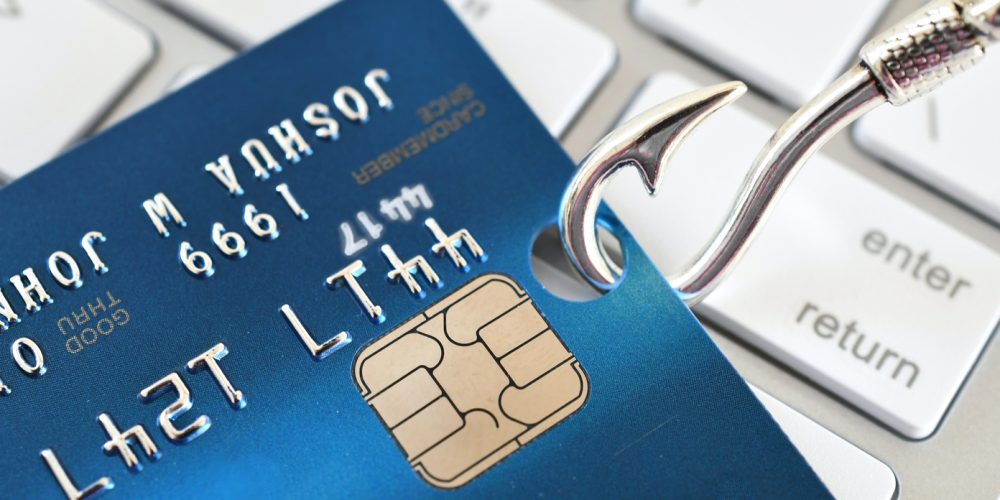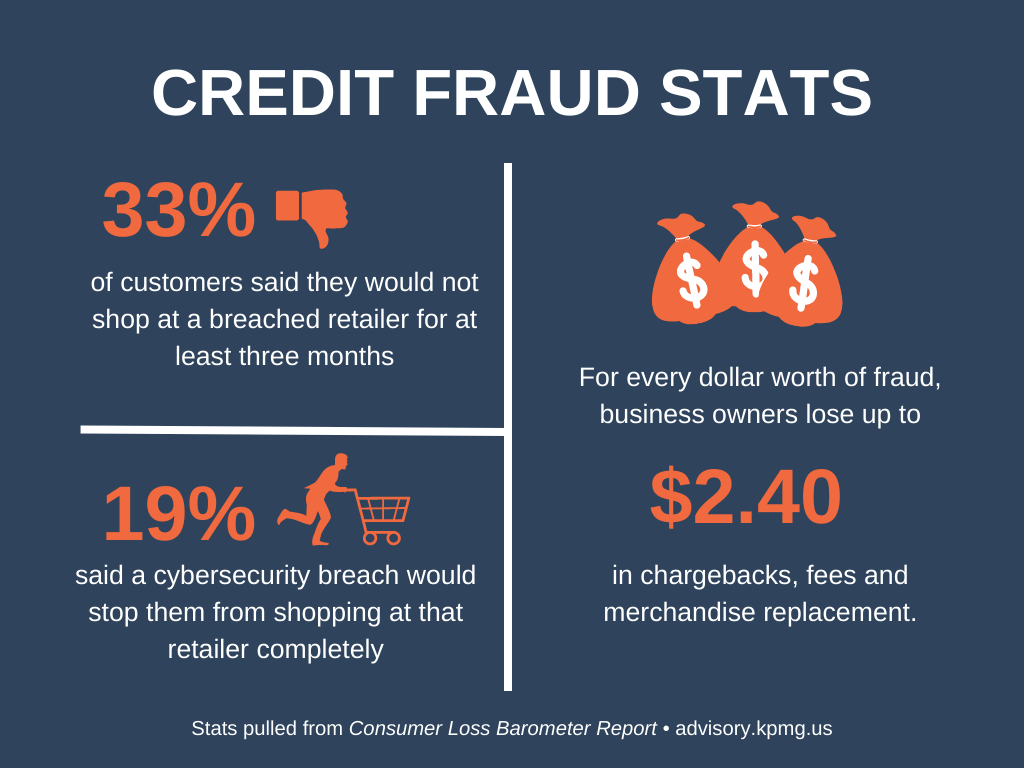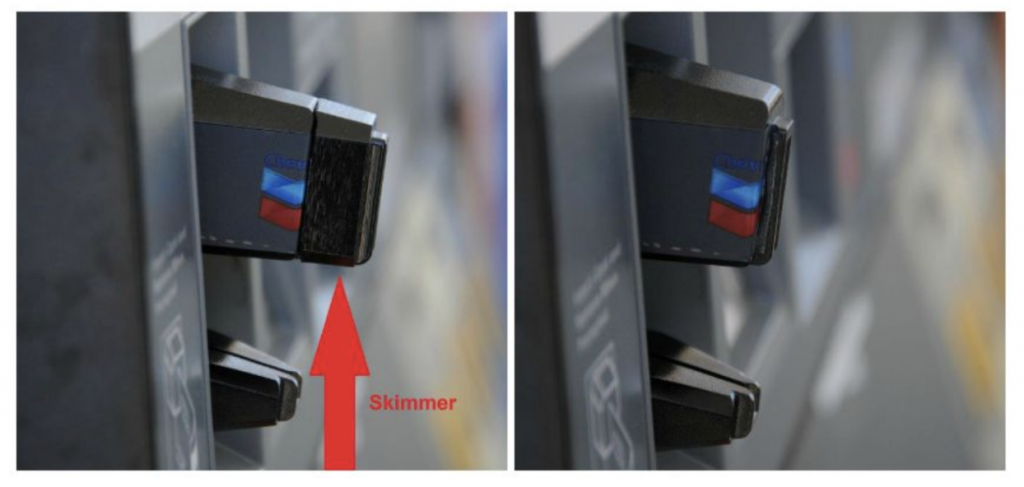How To Protect Your Business From Credit Fraud

When it comes to imminent threats to our business and personal wellbeing, credit fraud is not usually the first thing that comes to mind. Many business owners are aware that fraud happens but they fail to take proper measures to protect themselves. We’d like to think that it won’t happen to us or that we’d be able to catch a scammer before they do too much damage, but unfortunately, that’s not always the case. Today we are going to talk about how to protect your business from credit fraud. Fraud prevention is the 1st step in stopping fraud from occurring
As technology gets smarter, so do credit card scammers. In fact, according to the Federal Trade Commission (FTC), consumers have reported losing over $5.8 billion to credit fraud in 2021. That’s a whopping 70% more than the previous year. Not only are scammers getting more creative, but the number of scams out there has increased significantly.
Unfortunately, consumers aren’t the only ones at risk. When a consumer gets their financial information stolen by a scammer, that scammer can then use the stolen information to purchase goods and services which puts business owners at risk as well.

Credit Card Scams Vs. Credit Fraud
The terms credit card scam and credit fraud often get confused. Both pertain to stolen financial information, although they differ slightly in meaning and who they affect. The best way to think about it is first someone is scammed and then fraud usually follows.
A credit card scam is a dishonest or deceptive tactic used to gain access to someone’s personal information. These scams can present themselves in a variety of different forms including fake sweepstakes, lotteries, internet services, or even job opportunities. We’d all like to think that we’d be able to spot a scam if it presented itself to us, but they’re often extremely convincing. Although anyone can be targeted by a scam, they mostly affect individual consumers.
Credit fraud is the act of using stolen information for malicious purposes such as draining bank accounts, buying expensive goods/services with stolen credit cards, or opening up new lines of credit in someone else’s name. Credit fraud can affect both individual consumers and businesses equally.
Common Tactics Used To Steal Credit Card Information
Protecting financial information for both your retail business and your consumers is of the utmost importance. Once that information gets out, there’s no way of knowing who has access to it and what they plan to do with it. This could end up causing a lot of damage to both your business’ finances and reputation.
The first step in protecting yourself and your consumers from credit fraud is knowing what to look for. We’ve listed the most common tactics used to steal credit card information.
Scam Calls & Texts
Today, people have their phones on them 24/7 which makes them the ideal target for scammers. Not only do they offer a direct line of communication to consumers, but most cell phones house personal and financial information that scammers can hack into.
Some of the most common forms of scam calls and texts include imposter scams (pretends to be someone you know or a trusted institution like the IRS), debt relief or credit repair scams, extended car warranty scams, fake charities, loan scams, fake sweepstakes or lotteries and travel/timeshare scams. Most times the scammers will set up bots to send out these calls or texts which target all phone numbers in an attempt to scam as many people as possible.
The best way to protect yourself from these scams is to ignore calls from unknown numbers, even if they have the same area code (scammers will purposely use your area code to throw you off). If you do end up answering the phone and think it’s a scam, hang up and block the number immediately.
Phishing
Phishing is a common strategy used by scammers where they send fake emails in an attempt to steal personal information. These emails are often constructed to mimic popular formats, use familiar branding and appear to be sent from a reputable source. It’s one of the most popular techniques used by cyber criminals to obtain credit card information.
As a business owner, it’s important to be on the lookout for phishing scams. If you see a charge come through that appears suspicious, you should flag the transaction and contact the consumer. Even if the transaction doesn’t end up being a fraudulent purchase, most consumers will appreciate you reaching out because it shows that you care about their security.
Card Skimmers
Scammers have created a device called a card skimmer which is basically a fake card reader that is placed over the real one to collect credit card information. These card skimmers are most commonly used at ATMs, gas stations, or retail stores with self-checkout kiosks.

The best way to protect your business and your consumers against card skimmers is to have your employees conduct regular visual and physical checks. Some skimmers are visually obvious like the one pictured above, while others are a bit more discreet. To physically check the device, you can wiggle the reader to see if it gives at all.
VISA also recently discovered that merchant point-of-sale networks are being hacked which allows criminals to remotely steal credit card numbers from transactions made via card reading devices. They think that scammers are gaining access via phishing techniques where malware is downloaded on the device, giving the hackers access to sensitive information.
The best way to protect yourself from being hacked is to avoid suspicious emails, download a virus protection program and keep an eye out for odd transactions.
Pickpockets
Pickpockets have been around for centuries and although they may not be as common as they once were, they do still exist. Most people expect to encounter pickpockets in heavily trafficked, public locations such as parks, city streets, or train stations. Although it’s true that they tend to frequent those types of locations, they can also be found in less crowded spaces like retail stores.
In fact, it’s not uncommon for pickpockets to target consumers while they’re shopping. The pickpocket will wait until you’re distracted, swipe your wallet or phone, and then steal your information or credit card. This form of credit card theft is difficult for businesses to detect since the card is used via an in-person transaction.
One way that your business can prevent the use of a stolen credit card is by requiring card users to present another form of ID. If they refuse to show ID, you have the right to refuse the transaction. Another way to prevent theft is to teach your employees how to spot a pickpocket and how to safely handle the situation.
You should also get in the habit of regularly reviewing security footage for suspicious activity. If you catch a thief in the act, you can then report them to law enforcement. Most thieves are repeat offenders so chances are your store wasn’t the only target.
We hope you are finding our tips on how to protect your business from credit fraud useful and will share them.

Credit Fraud Red Flags
As you can see, credit card scams can present themselves in a variety of different forms both online and offline. To help you spot fraudulent charges, we’ve compiled a list of red flags to be on the lookout for:
Red Flags For E-Commerce Transactions
- Expedited shipping to an address that differs from the billing address.
- Mismatched IP location and credit card address.
- Suspicious-looking email accounts.
- Multiple failed attempts to enter credit card information.
- Repeated declined transactions.
Red Flags For In-Person Transactions
- Pulling a credit card out of a pocket rather than a purse or wallet.
- Purchasing a bunch of expensive and seemingly random items.
- Rushing the transaction.
- Avoid swiping the card or inserting the chip.
- Unsigned cards.
- Refusing to show additional ID, such as a driver’s license.
3 Things You Can Do to Protect Your Business From Credit Card Fraud
As you can see, credit fraud is no joke. It’s your responsibility as a business to ensure that you’re taking proper precautions to protect yourself and your consumers. All it takes is one breach and your entire system could be at risk. We’ve highlighted three things that you can do as a business to help prevent credit fraud.
1) Use A PCI-Compliant Payment System
When setting up a payment system for online & point-of-sale devices, you need to make sure it’s compliant with regulations set by the Payment Card Industry Security Standards Council. This includes things like building a secure payment network, protecting cardholder data, maintaining a vulnerability management program, implementing strong access control measures, regularly monitoring and testing networks, and maintaining an information security policy. If your company fails to comply with these regulations and becomes the victim of a cyber-attack, you could be liable for up to $500,000 in fines.
2) Follow EMV Compliance Laws
Along with following PCI regulations, you’ll also need to adhere to EMV compliance laws. EMV (Europay, Mastercard & Visa) payment technology refers to chip readers. Being compliant with EMV compliance laws means that all point-of-sale devices must have chip-reading technology.
Chip readers are a more secure way of handling payment since they’re difficult for scammers to hack into. Not only is EMV technology more secure, but it can save your business from massive fines.
If a customer was only given the option to pay via a magnetic stripe card reader and they were to get their information stolen, your business would be responsible for chargeback fees and hefty fines for not following proper EMV compliance.
3) Report All Suspicious Activity Or Signs Of Fraud
If you or an employee at your business suspects that a stolen credit card has been used or an online charge is a fraudulent activity, it must be reported immediately. You should file the report to the credit card provider so that they can take a deeper look into the charge. If the charge is found to be fraudulent, the credit card company will alert the consumer who can then dispute the charge and take any other necessary precautions to prevent future charges.
Conclusion
Your business is your livelihood which means that you’ll do anything in your power to protect it. The good news is that just by reading this article, you’re well on your way to protecting your business from credit fraud. Learning about common scams, recognizing red flags, and taking preventative measures will all help ensure that you’re protected. Stay smart, stay safe.
How To Protect Your Business From Credit Fraud FAQs
Q: What Is Credit Fraud, And Why Should Business Owners Be Concerned About It?
A: Credit fraud is the act of using stolen credit card information to make unauthorized purchases or open new lines of credit. Business owners should be concerned about it because when a consumer’s financial information is stolen, the scammer can use it to purchase goods and services, which puts the business at risk of losing money and damaging its reputation.
Q: What Is The Difference Between A Credit Card Scam And Credit Fraud?
A: A credit card scam is a deceptive tactic used to gain access to someone’s personal information, while credit fraud is the act of using that information for malicious purposes. Credit card scams can lead to credit fraud, as scammers may use stolen information to commit fraud.
Q: What Are Some Common Tactics Used To Steal Credit Card Information?
A: Common tactics used to steal credit card information include scam calls and texts, phishing emails, card skimmers, and pickpocketing. Scammers may also hack into merchant point-of-sale networks to remotely steal credit card numbers.
Q: What Are Some Red Flags For eCommerce And In-Person Transactions That Could Indicate Credit Fraud?
A: Red flags for eCommerce transactions include expedited shipping to an address that differs from the billing address, mismatched IP location and credit card address, suspicious-looking email accounts, and multiple failed attempts to enter credit card information. Red flags for in-person transactions include pulling a credit card out of a pocket rather than a wallet or purse, purchasing expensive and seemingly random items, and refusing to show additional ID, such as a driver’s license.
Q: What Can Businesses Do To Prevent Credit Fraud?
A: You can protect your business from credit card fraud by using a PCI-compliant payment system, following EMV compliance laws, reporting all suspicious activity or signs of fraud, and training employees to recognize and prevent credit fraud. They should also conduct regular visual and physical checks to detect card skimmers and other devices used to steal credit card information.
TAKE A LOOK AT SOME OF THE PRODUCTS THAT WE SERVICE OR REPAIR
- HONEYWELL CK65 MOBILE COMPUTER
- ZEBRA MC9300 MOBILE COMPUTER
- ZEBRA ET51 MOBILE COMPUTER
- DATALOGIC 4500 HANDHELD SCANNER
- NCR REALPOS XR7 POS TOUCH TERMINAL